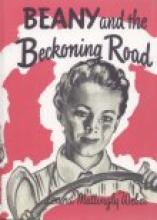No name
American Cardinal Readers: Book 2
Book two begins to offer stories and poems that are enjoyable and worthwhile reading in their own right such as The Christ Child by G.K. Chesterton, The Honest Woodman, several Saint stories (Blessed Imelda, St. Teresa the Little Flower, St. Francis and the Wolf) and other short stories, folk tales and fairy stories.
American Cardinal Readers: Book 3
The Third Grade reader includes a total of fifty-two selections which are somewhat coordinated with the seasons of the year. The selections include poetry (about God, country, nature, etc.) and a variety of stories that are both appealing and inspiring - saint stories, fairy tales (with very obvious morals), biographies, stories that teach something about the world around us and others relating examples of devotion and heroism, such as the well-known tale of the little Dutch boy ("The Hero of Haarlem"). A few of the stories are a little "dated", such as the story entitled, Jamie Watt and his Grandmother's Tea Kettle" which treats the concept of steam engines in a rather contemporary fashion. Rather than being problematic, I see this perspective as informative and educational. (Another learning opportunity). The stories are surprisingly "multicultural" (in a good way) for their day; you'll find several very nice stories (and even a poem) involving American Indians and one story about a little boy from China.
American Cardinal Readers: Book 4
Fifty-three separate stories including two stories of Christopher Columbus, "Three of Our Lord's Miracles", "The Story of Daniel", "The Angel of the Resurrection" by St Teresa of the Child Jesus, "The Children's Hour" by Longfellow and "The Church Underground". A few black and white pictures. Glossary.
American Cardinal Readers: Book 5
Forty-seven stories including "The Star Spangled Banner", "Our Lord and Our Lady" by Hiilaire Belloc, "St Martin of Tours" and "St Brigid". A few black and white pictures. Includes study suggestions for each story. Glossary.
American Cardinal Readers: Book 6
Fifty-nine stories including "Bethlehem 1918", "Daniel Boone" by Teddy Roosevelt, " St Aloysisus", "O Captain! My Captian" by Walt Whitman","St Isaac Jogues", "The Address of the Roman Catholics to George Washington, Esq. President of the United States". Includes study suggestions for each story and a glossary. A few black and white pictures.
In the story "Bethlehem, 1918" on page 88, there is a troubling sentence: "In Jerusalem, in spite of its overwhelming interest, the Catholic pilgrim is distressed by the discord of jarring creeds, by the crowds of Mohammedans and foreign Jews that infest it..." While we certainly can't judge the author's intentions in referring to people as infesting a place, it certainly seems contradictory to Catholic teaching on the value of each human life, regardless of race or religion. I would be anxious to make clear to my children that it is inappropriate to refer to people as infesting a place. While some may choose to skip the story entirely, I think it can be valuable for children to read such things and discuss them with their parents in order to be better prepared to avoid such errors and evils in the future. (A.V.H.)
American Cardinal Readers: Book 7
Forty-four stories include: "The Legend of Sleepy Hollow", "The High Tide at Gettysburg", "The Martyr of Molokai", "Holy Ireland", and "Malchus the Monk". Includes study suggestions for each story. A few black and white pictures. Includes a glossary and a home reading list.
American Cardinal Readers: Book 8
Sixty-one stories including "A Christmas Carol" by Dickens, "At High Mass" By Msgr. Benson, "The Names of Our Lady", "The Sign of the Cross" by John Henry Cardinal Newman, and "The New School" by Joyce Kilmer. Includes study suggestions for each story. A few black and white pictures. Includes a glossary and home reading list.








